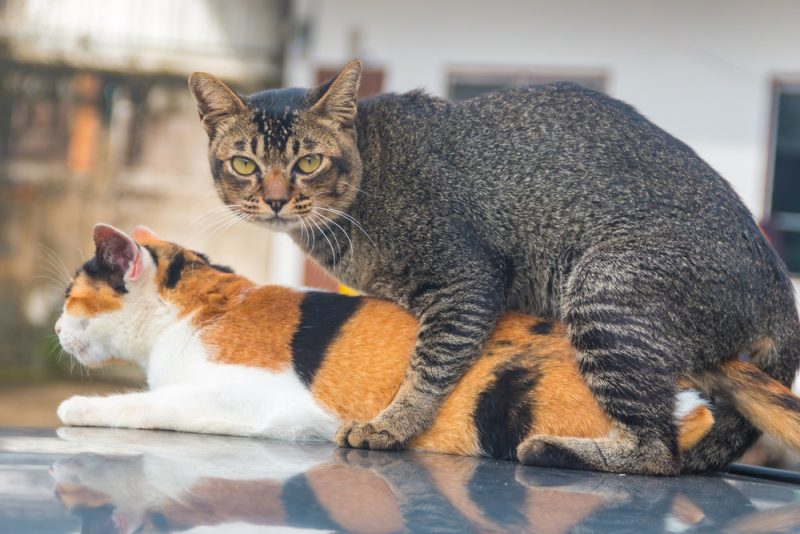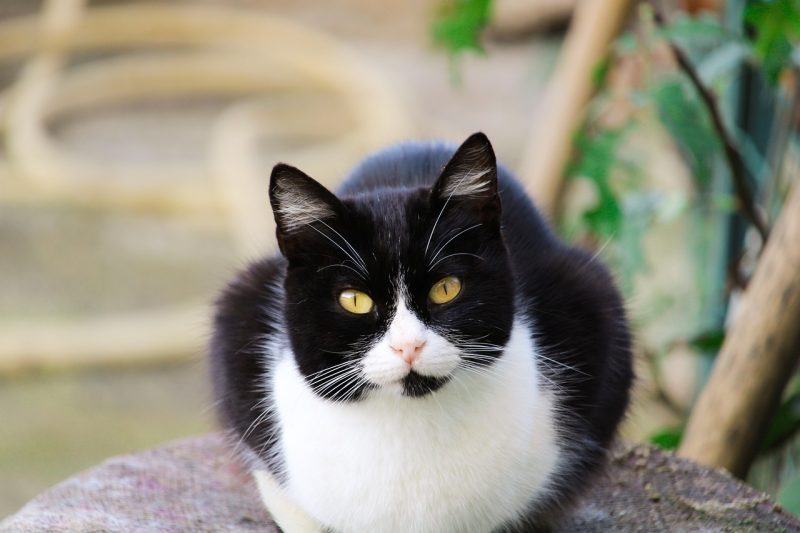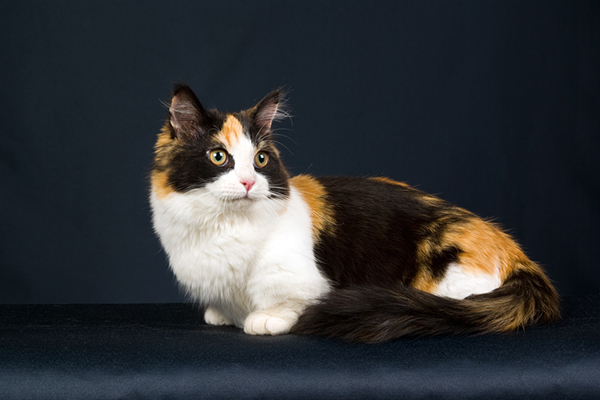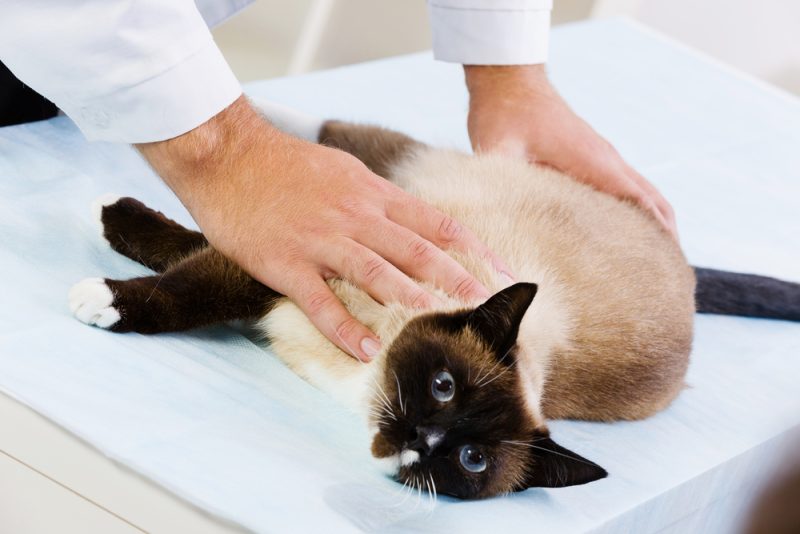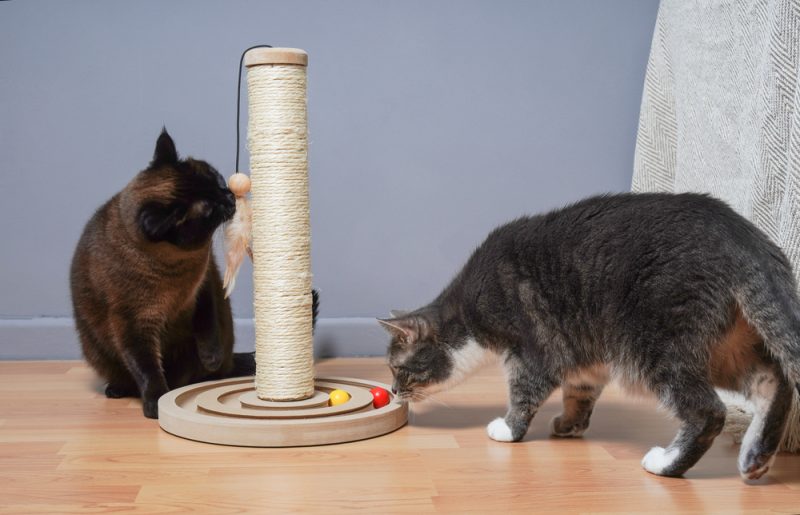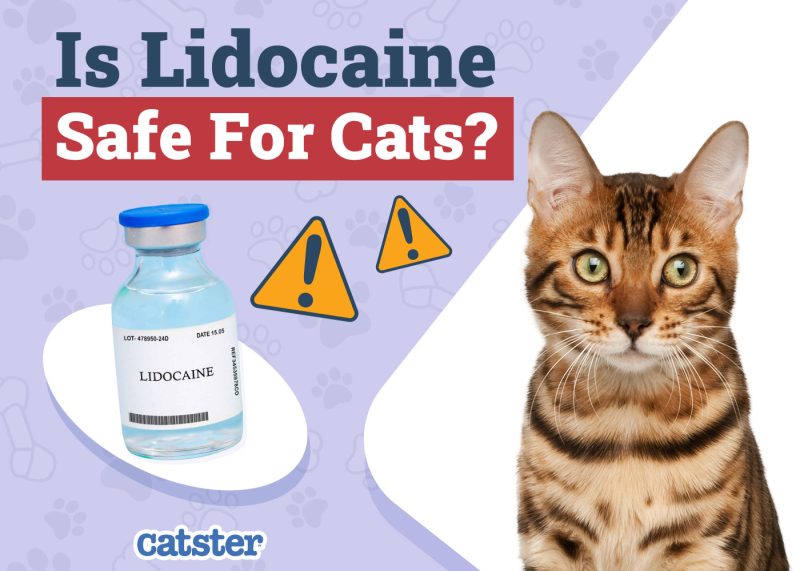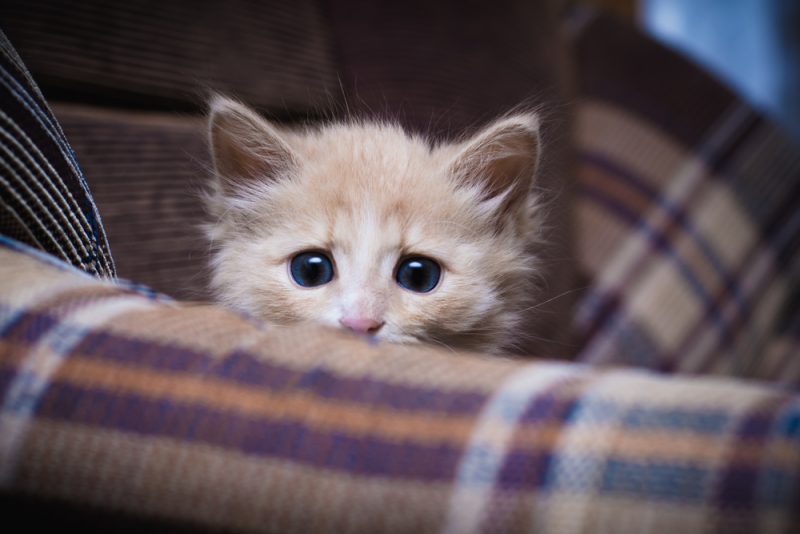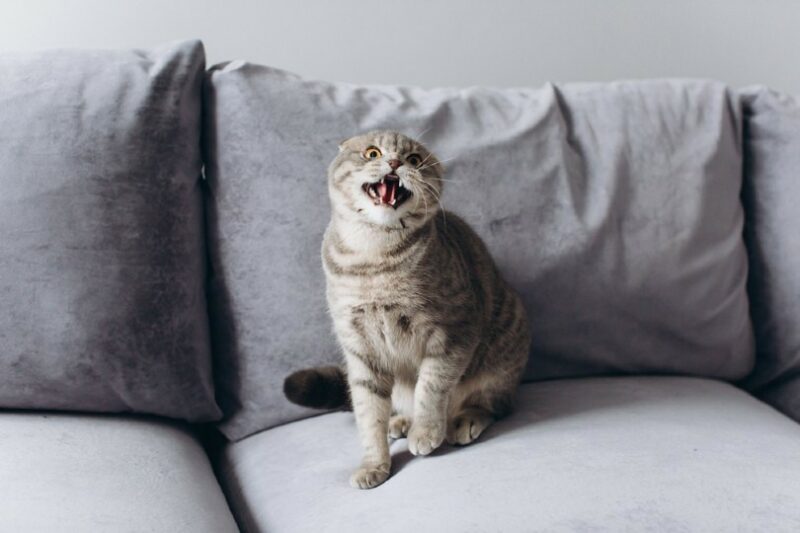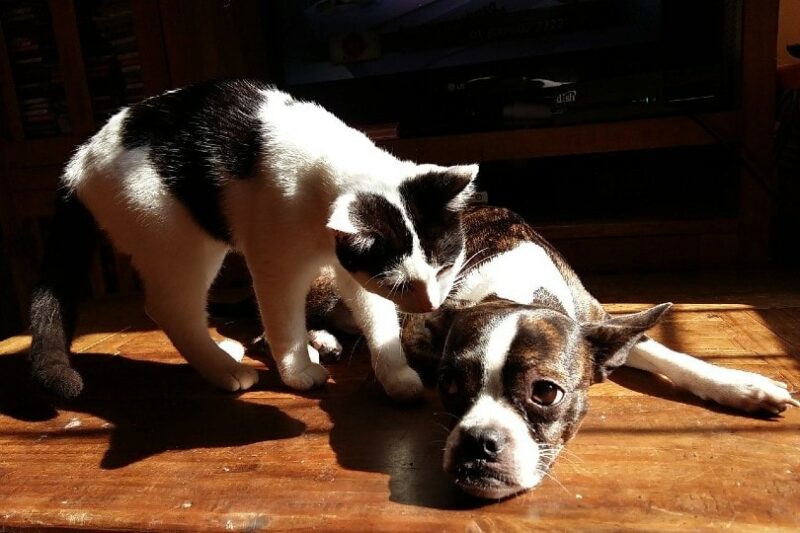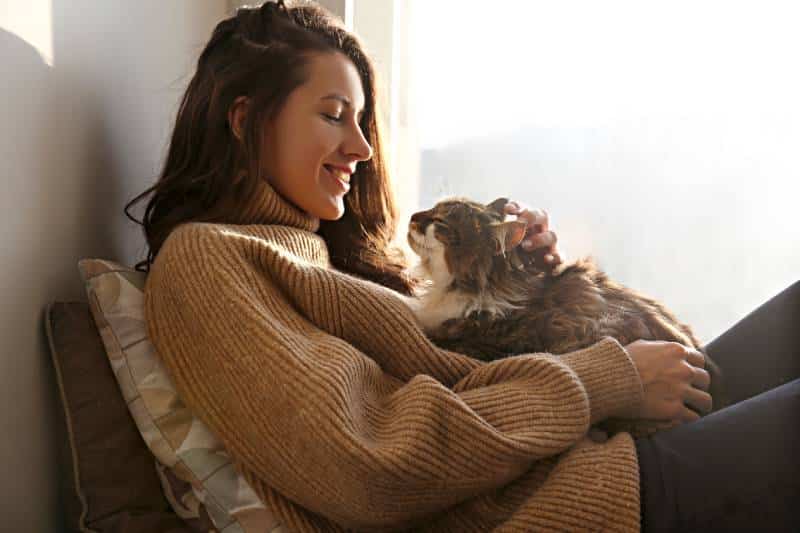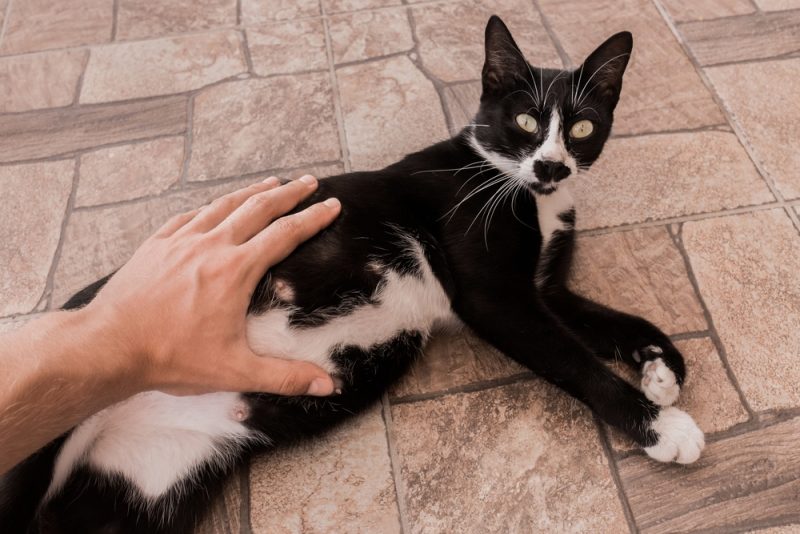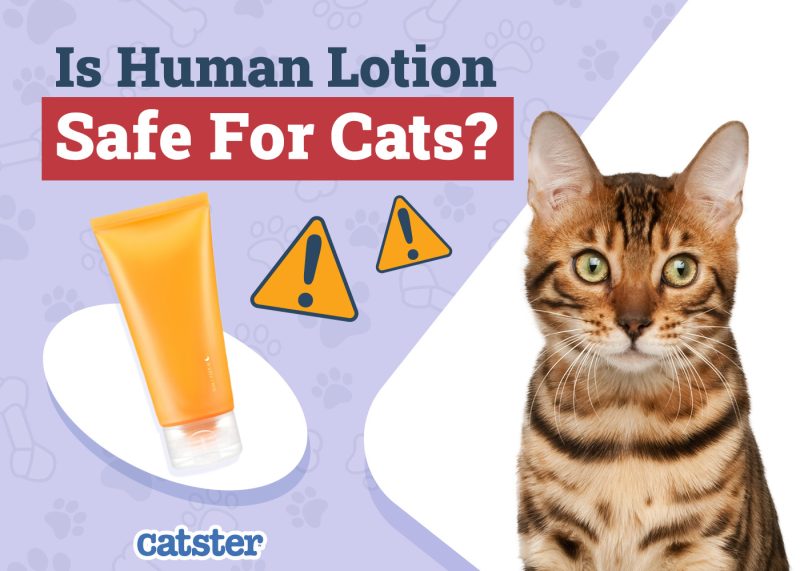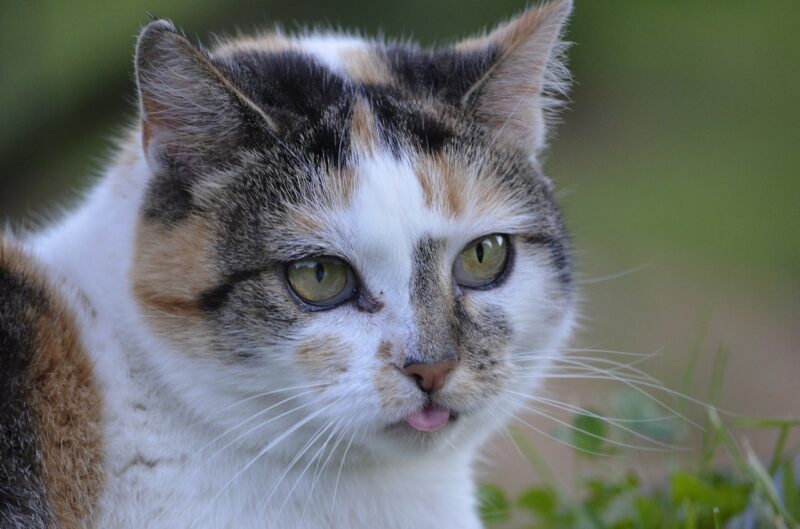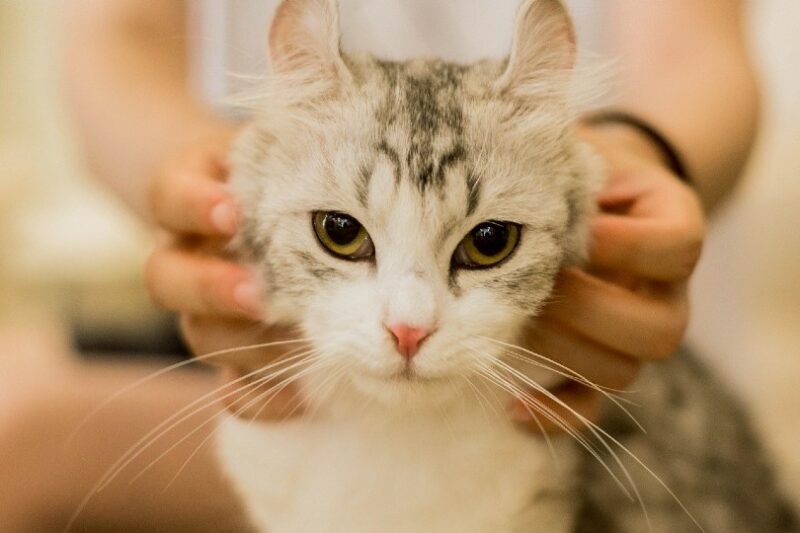In this article
View 2 More +Dog owners are usually embarrassingly familiar with the sight of their pets humping other pups, objects, or people. If you have a cat, you probably never expected to deal with this behavior, but do cats hump as well? Yes, cats sometimes hump, but the reasons why can vary.
In this article, you’ll learn why cats hump, as well as the answers to frequently asked questions like why cats knead and hump, or why they bite and hump blankets. We’ll also provide tips on how to cope with this slightly mortifying behavior.

The 5 Reasons For Cats Humping
Although humans may find the actions embarrassing, humping or mounting is a normal behavior for cats. Here are some of the reasons why cat humping may occur.
1. Hormones
At its most basic, cats humping is a mating behavior. Male cats mount and hump females in heat. This behavior can linger even after a male cat is neutered. Neutering is considered effective at eliminating sex-linked behaviors about 90% of the time.
Some male cats will continue to spray and hump for some time, even after they’re neutered. Cats who are neutered later in life are more likely to keep humping, because they have likely performed the action and associate it with pleasant feelings. Neutered male cats still have hormones, just at lower levels.
They may still have the urge to hump other cats, especially females in heat. Kneading can also be associated with receptiveness to mating in female cats, who may hump as they perform the action as a result. Cats can hump fuzzy toys, blankets, or slippers because they’re using them as a stand-in for an actual mate.
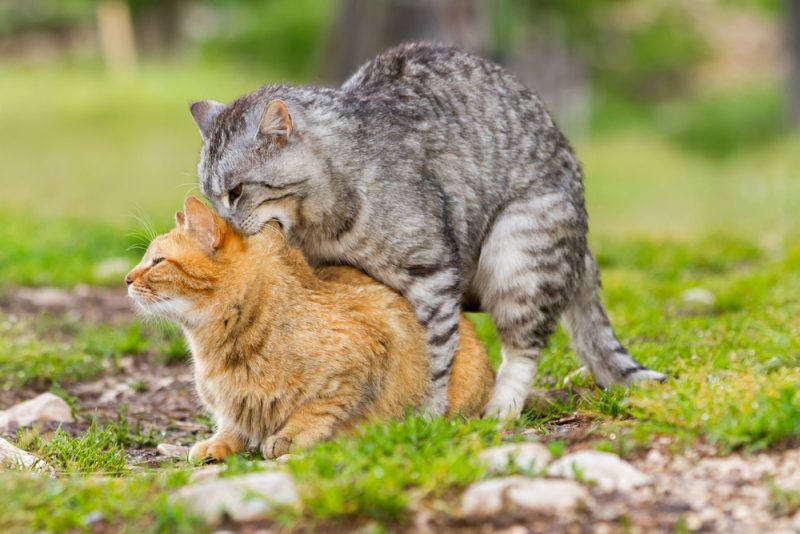
2. Dominance
When dogs hump each other, it’s generally as part of play or dominance behavior. While not as common, cats may also hump to display dominance or as a territorial marker. Cats have scent glands in their feet that can be activated as they knead. Cats humping and kneading might be their way of marking territory and trying to intimidate other cats.
3. Discipline
Mother cats often grab unruly kittens by the scruff and pin them down until they get calmer. Adult female cats who mount kittens may be reverting to this instinct. You may notice this behavior if you introduce a new kitten into a house with other adult cats.
4. Boredom
Bored and frustrated cats often engage in certain behaviors to cope with their feelings. These behaviors may include humping. Other signs of boredom include vocalizing, destructiveness, fabric sucking, or overgrooming.
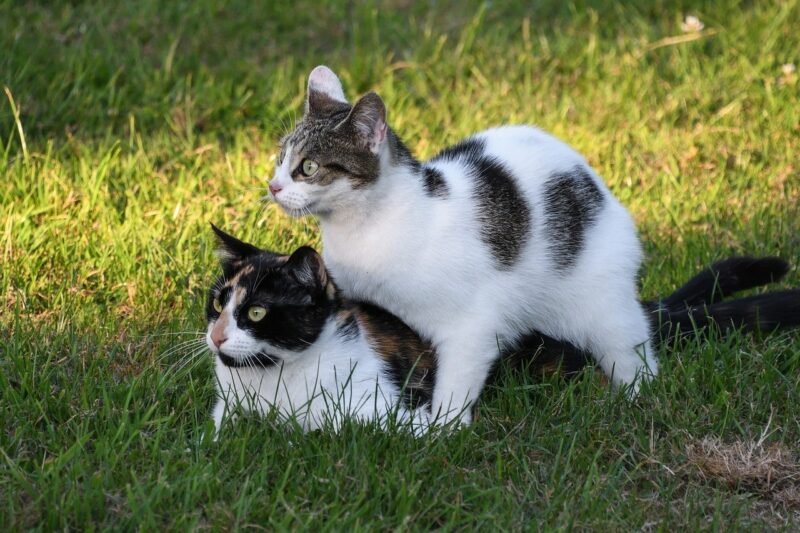
5. Attention
If the only time you pay attention to your cat is when they perform a behavior you don’t like, they will probably keep doing it. Negative interaction is still interaction. You may be accidentally training your cat to hump by your response when they do it.

Can You Prevent Your Cat from Humping?
Neutering (or spaying) your cat will generally prevent most sexually related behavior, including humping. Other steps you can take to prevent cats humping include making sure they don’t feel the need to compete or prove their dominance to each other. In a multi-cat household, providing each cat with their own space or territory can prevent resource competition. If there seems to be a lot of humping going on, consider using a plug-in pheromone diffuser, such as Feliway, to help create a less hormonally charged atmosphere.
Be sure to provide enough litter boxes, toys, bowls, and beds for each cat. Give each cat individual attention, whether it’s playtime, grooming, or just a good cuddle session. That way, they don’t feel the need to fight over or claim you either.
Introduce new cats into the household slowly, allowing the resident pets to grow used to the sound and smell of the newcomer before meeting them “in person.” Give older cats a break from rambunctious kittens to prevent them from resorting to humping as a discipline tactic.
To prevent frustration or boredom humping, make sure your cat has an interesting and enriching home environment, especially if they’re left alone frequently. Toys, scratching posts, and vertical space are all essential. Daily exercise and interaction are also vital. You can even provide safe outdoor enrichment by leash training your cat or getting a “catio.” An experienced veterinarian can also give you some great tips on how to prevent this unwanted behavior.
If you need to speak with a vet but can't get to one, head over to PangoVet. It's an online service where you can talk to a vet online and get the advice you need for your pet — all at an affordable price!


Frequently Asked Questions (FAQ)
Will My Cat Stop Humping on Their Own?
Maybe. Some cats grow out of this behavior, especially if it’s due to lingering hormones from a late neutering. Cats who are humping each other as part of a dominance or territorial dispute may eventually reach an understanding without any help from you and stop the behavior too. Again, you don’t necessarily need to intervene to stop mounting behavior just because it makes you uncomfortable, unless it’s causing other issues.
If your cat simply enjoys the sensation of humping, there is no need to intervene, unless they are doing it more and more, and seem to be uncomfortable. Remember, cats don’t have feelings of embarrassment or shame about sexual behaviors; they are merely responding to physical stimuli and primal urges.
Why Does My Cat Bite and Hump the Blanket?
When a cat bites and humps a blanket, they’re substituting the blanket for a mate. When a male cat mounts a female, they grip the female’s scruff in their mouth to keep her from running away, so they are just acting out these instinctive motions.
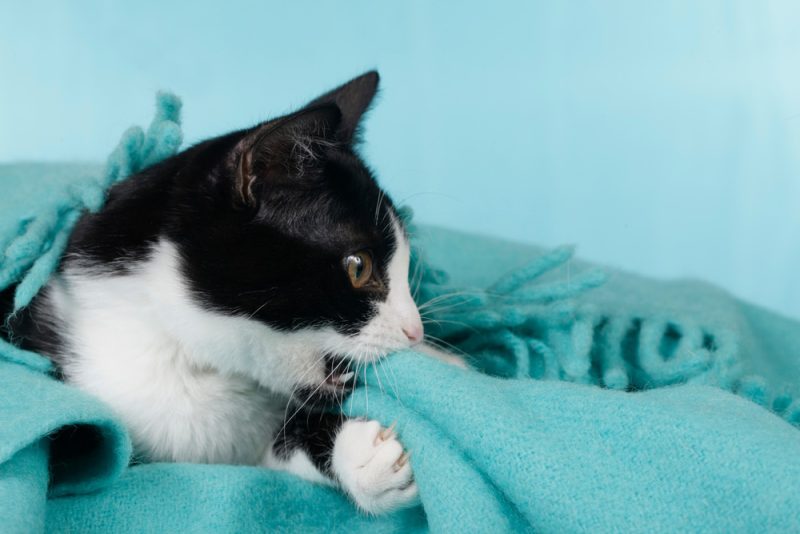
Why Does My Cat Hump While Kneading?
Female cats can knead objects to show they’re receptive to mating, and some will also hump the item when no males aren’t available. Kneading behavior is generally associated with feelings of pleasure and happiness for cats, and sometimes this can get intermingled with the pleasant physical sensation brought about by humping.
Should I Worry About My Cat Humping?
We’ve discussed some of the situations where humping could be a problem. You should also be careful that you don’t miss the signs of a urinary problem in your male cat because you think it’s part of a sexual behavior. Male cats may obsessively lick their penis when they’re suffering from urinary infections or disease.
Male cats can become obstructed and unable to pee if they have either of these conditions. Urinary obstruction in male cats is an emergency and requires prompt veterinary attention. If humping is combined with other obsessive behaviors like fabric sucking or chewing, it could be a sign of something else.

Conclusion
As you learned in this article, cats don’t hump as frequently as dogs, but when they do, it could be for several reasons. Understanding the reasoning behind the behavior can help you decide if you need to take action. Even if you find it embarrassing to explain your cat’s actions to your friends or house guests, it’s essential to remember that in your kitty’s mind, they’re behaving normally, and should not be deterred from, or punished for, a completely natural activity.
Don’t apply human reasoning to your cat’s behavior. It can lead to miscommunication between you and your cat, potentially creating more severe behavioral problems along the way.
Featured Image Credit: Attapol Yiemsiriwut, Shutterstock
